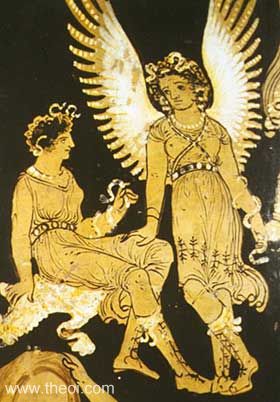Continuing from my previous post . . . .
.
Resurrection — ἀνάστασις — in both Acts and Eumenides
A number of scholars have remarked upon the reference to the resurrection in Eumenides by Aeschylus when commenting on the reference to the resurrection in connection with Paul’s appearance in the Areopagus before the Athenians.
F. F. Bruce, in The Book of Acts, p. 343, when commenting on the scoffing Paul received after mentioning the resurrection, recalled the scene in Aeschylus’ play that likewise mentioned the resurrection in connection with a hero appearing before the Areopagus. Most Athenians, Bruce said, would, on hearing of Paul’s mention of the resurrection, have agreed with the sentiments expressed in the play by
the god Apollo, . . . on the occasion when that very court of the Areopagus was founded by the city’s patron goddess Athene: “Once a man dies and the earth drinks up his blood, there is no resurrection.” Some of them, therefore, ridiculed a statement which seemed so absurd.
The footnote supplied points to Aeschylus, Eumenides, lines 647-8, where the same Greek word, ἀνάστασις, is used in both the play and Acts 17:18, 32.
Similarly Charles H. Talbert in Reading Acts, p. 157, makes note of the same observation:
Scoffing is a typical response to speeches by fringe figures . . . Given the assumptions of Paul’s auditors, scoffing is an entirely appropriate response. Aeschylus, Eumenides 647-48, relates how, on the occasion of the inauguration of the court of the Areopagus, the god Apollo says, “When the dust hath drained the blood of man, once he is slain, there is no return to life.”
Lynn Kauppi sees more in the link between Aeschylus and Acts than a background pointer to a common belief among Athenians of the day. He suggests that the way “Luke” weaves the allusions into the scene of Acts 17:16-34 gives reason to think that his audience “may have observed an allusion to the Athenian literary tradition.” (The Greek text is from Perseus and the English translation from Kauppi’s manuscript.) Continue reading “Paul and Orestes before the Areopagus: the resurrection”

